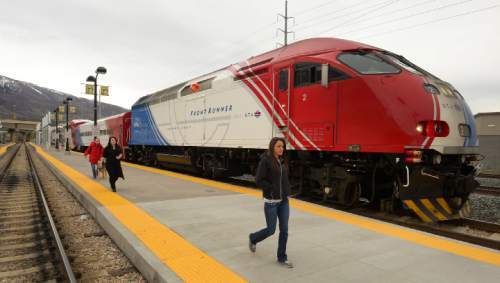This is an archived article that was published on sltrib.com in 2016, and information in the article may be outdated. It is provided only for personal research purposes and may not be reprinted.
It was only a few months ago that executives at the Utah Transit Authority were explaining, quite reasonably, that it would not make sense for that multi-county system to offer its services for free. The system that serves much of the Wasatch Front is, we were told, much too large and complex to run the way bus services in the Park City and Logan areas do — without a fare box.
But some preliminary results of a much longer-range study of all the transportation needs and opportunities for the region were released Friday, and one of the visions included is a public transit system that charges very little — or nothing at all — for a ride.
Utah Transportation Commission members got a peek at the study being drafted jointly by UTA, the Utah Department of Transportation, Wasatch Front Regional Council and Mountainland Association of Governments. It's a project that not only covers a lot of territory but brings together various state and local government agencies whose different portfolios don't always have them pulling in the same direction.
The reason a free public transit system is at least worth a serious look is that when you add the people who are responsible for building and maintaining highways and keeping up with rising demand for all the other kinds of public services and infrastructure, the per-ride take, and subsidy, for each bus and train isn't all that matters. Or even the most important thing.
Looked at holistically, it would be in the overall best interest of a great many people if it were free to ride the buses and TRAX trains that now serve the area, plus many more. It would help working-class people get around, reduce wear and tear on city, county and state roads, reduce and delay the need for major renovations or whole new highways and, most important of all in these parts, ease air pollution.
Adding up all those potential benefits could well produce an equation proving that it would make sense for area taxpayers — even those who never sit in a UTA seat — to fork over enough in tax subsidies to make transit a free service.
It would require a very broadly cast cost-benefit analysis that would include the value of highways not widened, potholes not filled, work and school days not missed, red air days not suffered through and heart attacks not occurring.
Also figured in would be the forgone expenses now associated with collecting fares, enforcing the rules and handling all that cash. But a free transit system has, at least in theory, so many benefits to so many people that we would be foolish in the extreme not to give it a very hard look.



